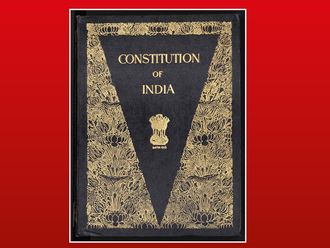I went to Satwa the other day and haggled with the Bangladeshi fruit seller and came away with a box of the most luscious, golden Indian Alphonso mangoes, at a bargain price.
"I want them ripe, to eat them today," I told the fruit seller, and he promised me they would be sweet.
The cloying, sweet smell of mangoes usually takes me back to the days of my youth in Hyderabad, south India, where just as the searing heat of summer begins to set in, fruit sellers of Arab extraction would come into our neighbourhood with push carts and announce in loud, sing-song voices, "Aam le aam, Barqas ke aam" (come and buy mangoes from Barqas).
Our cook and housekeeper would then let down from the first-floor window a hand-made jute bag (which incidentally has become a huge hit today as a 'green' alternative to plastic bags) attached to a rope and ask for a couple of kilograms of the 'king of fruits'.
The mangoes would be dumped into tubs of chilled water and as the evening set in there would begin a cacophony of slurps, squelches and squeals as we children dug into our favourite fruit.
The best way to eat mangoes is, of course, with your fingers and to strip away the flesh of the fruit with your teeth, the juice dribbling down your elbows. ("Dad, you guys were gross," my son tells me today, digging into the fruit daintily with a teaspoon like a dotty Russian aristocrat).
I did not know then, but most of the fruit sellers were of Yemeni extraction, their forefathers having come to serve in the army of the Nizam (the former ruler of Hyderabad). They wore chequered lungis and covered the back of their heads with a tiny, round, white, knitted cotton cap and spoke in what I thought was a quaint dialect.
Many years later I went to Barqas, the fruit sellers' area in Hyderabad, to do some research for a feature on the Arab connection with my hometown, and wasn't too surprised to find that their gestures and body language were similar to those of my favourite Yemeni fruit seller in Jeddah, Saudi Arabia.
"Suk-kar [sugar-sweet]," he would say with an elaborate flourish, touching his finger-tips to his lips and making a kissing sound, when I asked if the watermelon was sweet.
Mangoes have been cultivated in India for thousands of years and have become part of the folklore. In Hindu culture the hanging of fresh mango leaves outside the front door during the Hindu New year is considered a blessing on the house.
The 'fruit of paradise' is described in many ways and it is said that Buddha was given a mango orchard by a faithful follower so that he could rest in its cool shade.
There are said to be 1,200 varieties of this Indian 'comfort food', which helps to lower the body's temperature during the dog days of summer. My favourites are the 'badamis', the almond-shaped mangoes from the south.
You can't get hand-churned mango ice cream in downtown Hyderabad anymore, but the creamy, soft, sweet treat was something to die for. Many years later I saw an ice cream churner for sale in a mall in Canada. You fill the outer part of the container with crushed ice and churn by hand the mango, milk, cream and sugar mixture. Beats Ben and Jerry's any day.
Which brings me to the famous Indian Urdu poet Mirza Ghalib, whose love for mangoes took precedence over his love for poetry. This is one of the most oft repeated anecdotes: Ghalib's friend and fellow poet, who did not share his passion for the fruit, watched a donkey approach a heap of mango skins, turn up its nose and walk away.
"See, even donkeys don't eat mangoes," he remarked, to which Ghalib is said to have retorted: "Of course donkeys don't eat mangoes."











